Explore by Category:
eCommerce
Want to Grow Your eCommerce? Keep an Eye Out for These eCommerce Trends in 2024
In 2023, the eCommerce market size reached a staggering $4.8 trillion – and it's estimated it will get to $9 trillion by 2032. These are big numbers your business could be a part of, too.
But harnessing the immense potential of the growing eCommerce market isn't a piece of cake. The larger the industry gets, the more expectations customers have. And if you want to tap into the massive growth online stores promise, you need to stay ahead of the curve.
Embracing trends and new best practices is not just an option anymore. It’s a must if you want to continue to grow customer loyalty and see that revenue rise as well.
So, what are the biggest eCommerce trends this year?
Trend #1: MACH-driven eCommerce
MACH architecture (Microservices, APIs, Cloud-native, and Headless) is slowly taking over the world of eCommerce. By leveraging this new approach to building online stores, businesses can provide a more personalized, faster, and smoother experience for their customers. This trend will continue accelerating in 2024 as more companies realize its benefits and switch from monolith to MACH stacks.
Additionally, with more businesses adopting MACH architecture, the competition is expected to increase and push other players in the market to adapt quickly or risk getting left behind.
The best part of MACH? It allows you to embrace any other trends faster, in an easier, and more scalable way.
Here’s how each of the components of MACH fares into the bigger picture.
Microservices-based platforms
Microservices are becoming increasingly popular in the eCommerce industry due to their ability to handle complex processes and scale as needed.
When you use a microservices-based eCommerce platform, you have more control over your online store's functionalities and tailor it to meet their specific needs. Furthermore, this approach allows for faster updates and reduces downtime, ensuring a seamless shopping experience for customers.
API-first approach
APIs (Application Programming Interfaces) are the backbone of modern eCommerce (and pretty much how any browser-based tool works, actually). They enable different systems to communicate and exchange data, making it easier for businesses to integrate their online stores with other technologies such as payment gateways, inventory management systems, and marketing automation tools. In 2024, an API-first approach will be crucial for businesses looking to connect their eCommerce platform with emerging technologies and deliver a more seamless shopping experience for their customers.
Cloud-native systems
As the demand for online shopping continues to grow, businesses need to have a scalable and reliable infrastructure in place. This is where cloud-native eCommerce comes in.
By leveraging cloud computing, businesses can easily scale their operations as needed, handle traffic spikes during peak seasons, and reduce operational costs. Moving forward, more businesses are expected to adopt this approach to ensure the smooth functioning.
Headless Commerce
Headless commerce allows you to separate the frontend of your store (presentation layer) from the backend (data source). With it, the development teams can use a single API to access all the data from different sources, which translates into less time on design and more on creating a seamless customer experience.
This is especially important given the growing number of devices people use to shop online. Using APIs allows you to easily adapt your store for mobiles, voice assistants, and anything that might pop up along the way.
The two main benefits of implementing headless are:
- Unparalleled control over your storefront UI: headless Commerce means more control over the look and feel of your store – which ultimately means more control over conversion rate optimization in the frontend. You can easily update images, layout, and even add new features without relying on a developer or touching any code. This drives faster innovation cycles, better user experiences, and ultimately boosts sales.
- Best-of-breed stack accessible via a simple integration: Composable commerce is one of the most important technology trends in eCommerce, as it helps you break down your online store into small components that can be easily added/removed, or modified. This makes it easier to quickly adapt and customize their store based on changing retail eCommerce trends, customer preferences, and other market factors.
With 74% of businesses admitting they fail to adapt to emerging eCommerce solutions, headless Commerce is a major problem-solver for online retail. So much so that, in 2022, 80% of businesses planned to implement headless architecture over the following two years.
Bonus: Composable commerce
While the term didn’t make it into MACH anagram, composable commerce is just as important for the tech stacks of the future storefronts as APIs or microservices. Composable commerce helps you break down your online store into small components that can be easily added, removed, or modified.
This makes it easier for businesses to quickly adapt and customize their store based on changing trends, customer preferences, and other market factors. This also enables you to easily integrate new technologies and applications, making it easier to stay up-to-date with the latest eCommerce trends.
Trend #2: Easier payment methods with digital wallets & BNPL
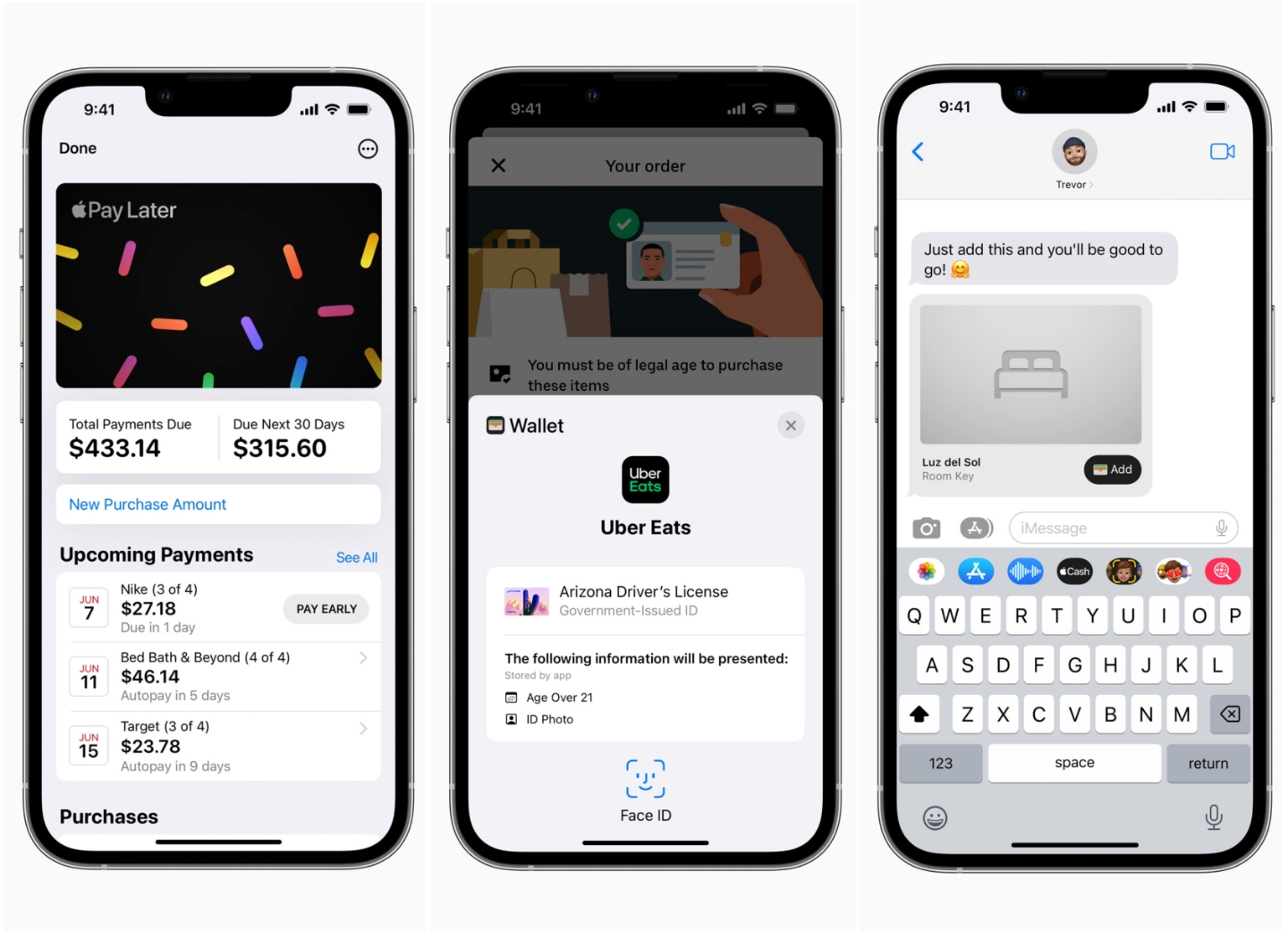
Digital wallets, like Google Pay, Apple Pay, and Paypal, have been steadily gaining popularity over the years. Research says that, by 2025 , payments with digital wallets will reach $9.4 billion, with China and Eastern countries leading the way in terms of popularity, followed by the United States.
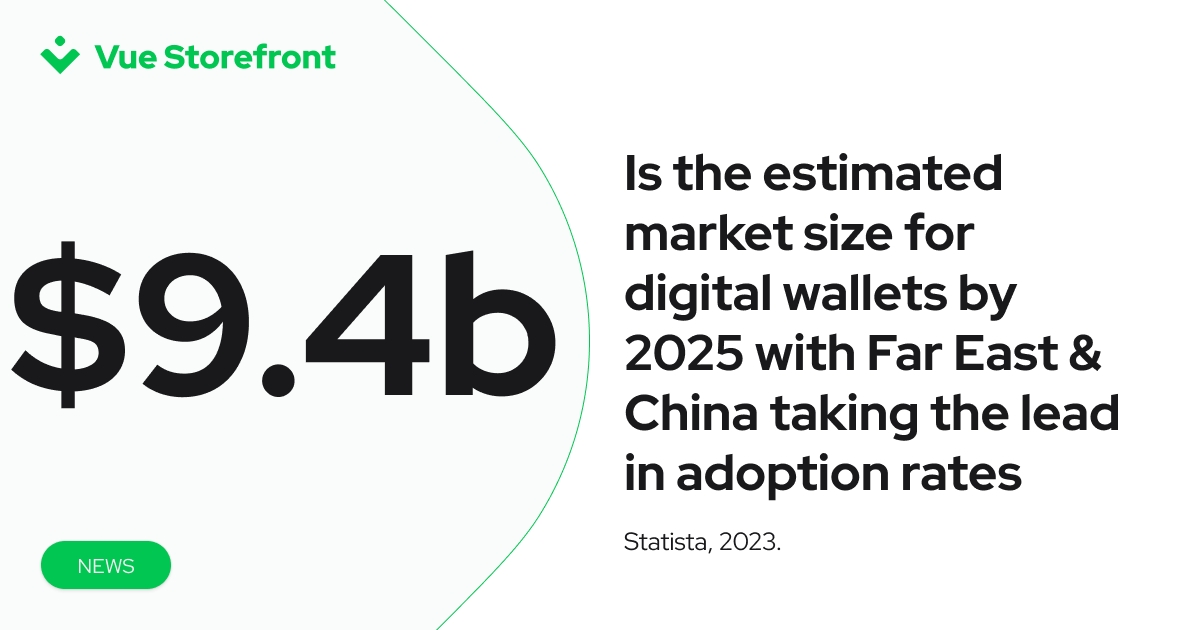
This shows that paying with digital wallets is not just a fad eCommerce market trend but a game-change in itself. An API-driven approach to eCommerce makes it easy to integrate your store with virtually any digital wallet nearly effortlessly.
Moreover, the buy now, pay later (BNPL) trend is growing significantly too, especially considering the economic climate. According to recent studies, BNPL accounted for 5% of global eCommerce transaction volume in 2023 – and will grow at a CAGR of 16% between 2024 and 2026.
With an economy that's still uncertain, layoffs still happening, and other financial issues, it's no wonder why people are turning to BNPL as an alternative payment method: it's easy, it's free (as they don't have to pay interest), and it's a lot more flexible even than credit cards.
The easiest way to implement a buy now, pay later solution (like Klarna or Sezzle ) is by using composable commerce. This technology allows you to implement your preferred BNPL solution(s) across the entire website in just a few clicks.
Using Adyen? See how to configure simple Klarna integration via Alokai!
Trend #3: Sustainable commerce
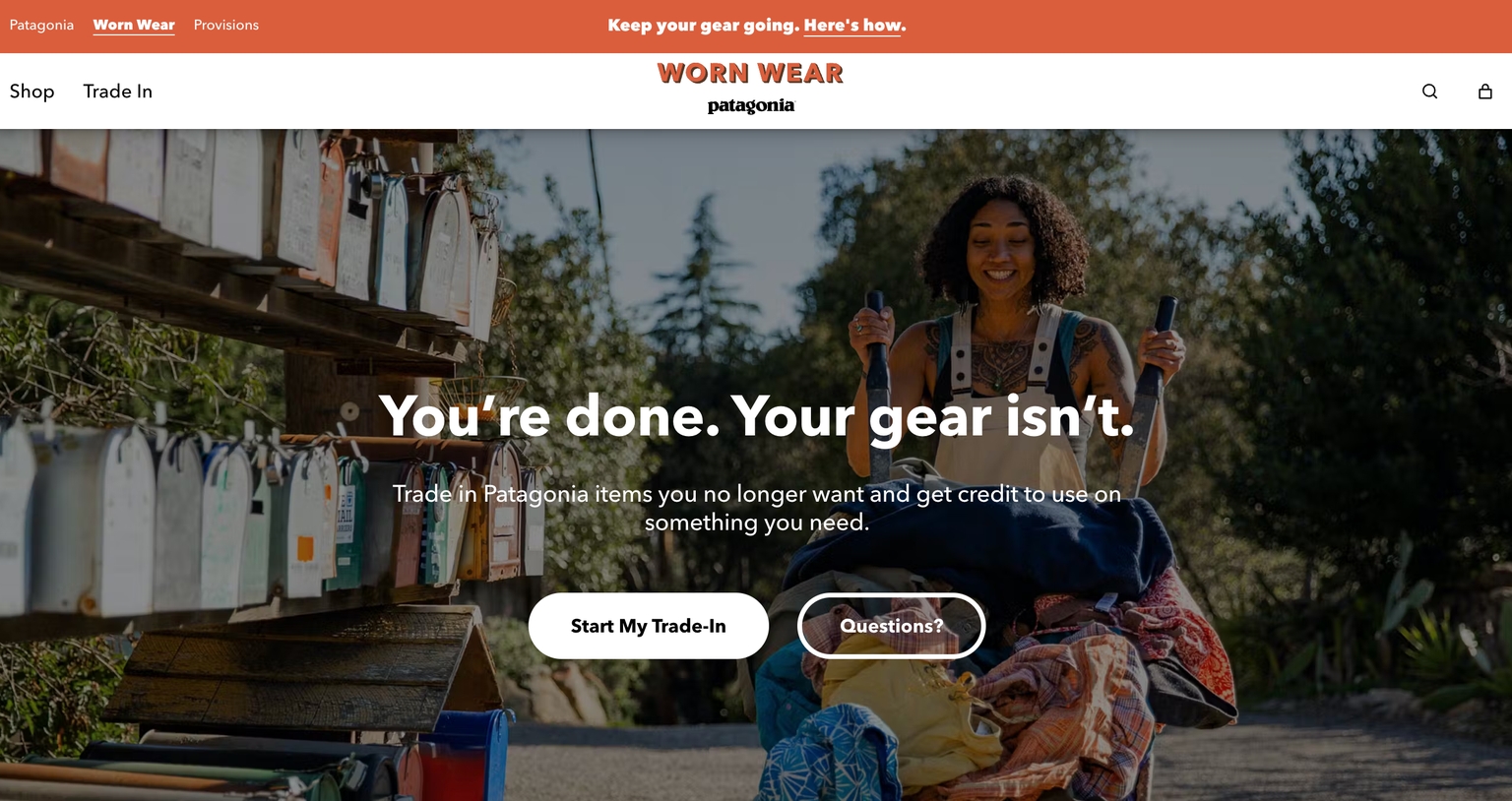
Of all the trends in eCommerce, this bears the heaviest importance – not just for your business' success, but for the wellbeing of our planet. Right now, CO2 emissions generated by the eCommerce logistics industry are at an all-time high, so it is about time we rose to the occasion and addressed the issue.
Consumers agree. According to a NIQ study , 70% of shoppers believe addressing climate change-related issues is more important than ever. And it’s not just CO2 emissions they’re worried about – the overall consumer consciousness on environmental matters is on the rise.
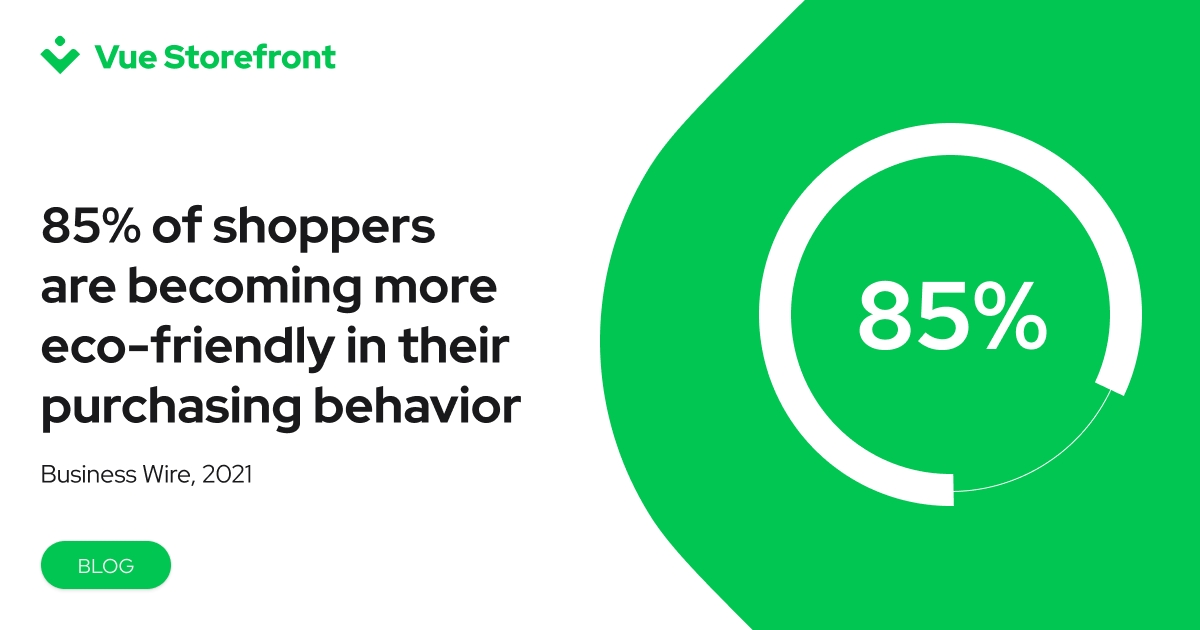
So much so that, in 2021, it was assessed that 85% of shoppers were becoming more eco-friendly in their purchase habits. From sustainable packaging to buying less fast fashion, paying attention to ethically sourced materials, and hyperlocal commerce, the world is waking up to a sad, frightening fact: it’s very late, but we can still make a change and help the planet heal.
As an eCommerce company, adapting to these consumer preferences is not just a business matter: it’s a matter of responsibility.
So what could you be doing? Here are some ideas:
Embrace ethically-sourced materials;
Ensure recycled packaging;
Provide your customers with eco-friendly options for delivery and/or purchase;
Cooperate with sustainable suppliers;
Promote recycling and upcycling initiatives as a brand;
Improve your product personalization engines to minimize returns, etc.
These all are all things you should absolutely do in 2024 (if you haven’t started yet.)
Trend #4: Same-day delivery
Now, this one is a little controversial in terms of sustainability.
With Amazon Prime setting the standard for fast deliveries, customers are increasingly expecting their online orders to arrive quickly. Same-day delivery is becoming more commonplace and will likely become a staple in the eCommerce industry in the near future.
This means eCommerce businesses must find efficient and cost-effective ways to offer speedy shipping options to keep up with customer demands.
Beware: same-day delivery is a double-edged sword for eCommerce brands. It can be a great tool for building loyalty and customer satisfaction – but the environmental price might be too great.
Around 17% of the world’s CO2 is directly correlated with transportation . Same-day delivery means you may not always load full trucks, you get less time for order fulfillment, and thus, human error can occur. Not only is same-day delivery more damaging for the environment from the point of view of the delivery itself, but the issue can be doubled by increased returns and higher levels of noise and pollution.
The alternative? Next-day delivery is a more environmentally friendly solution – and one that doesn’t make your customers wait for their products for too long.
Trend #5: AI & multi-channel customer support
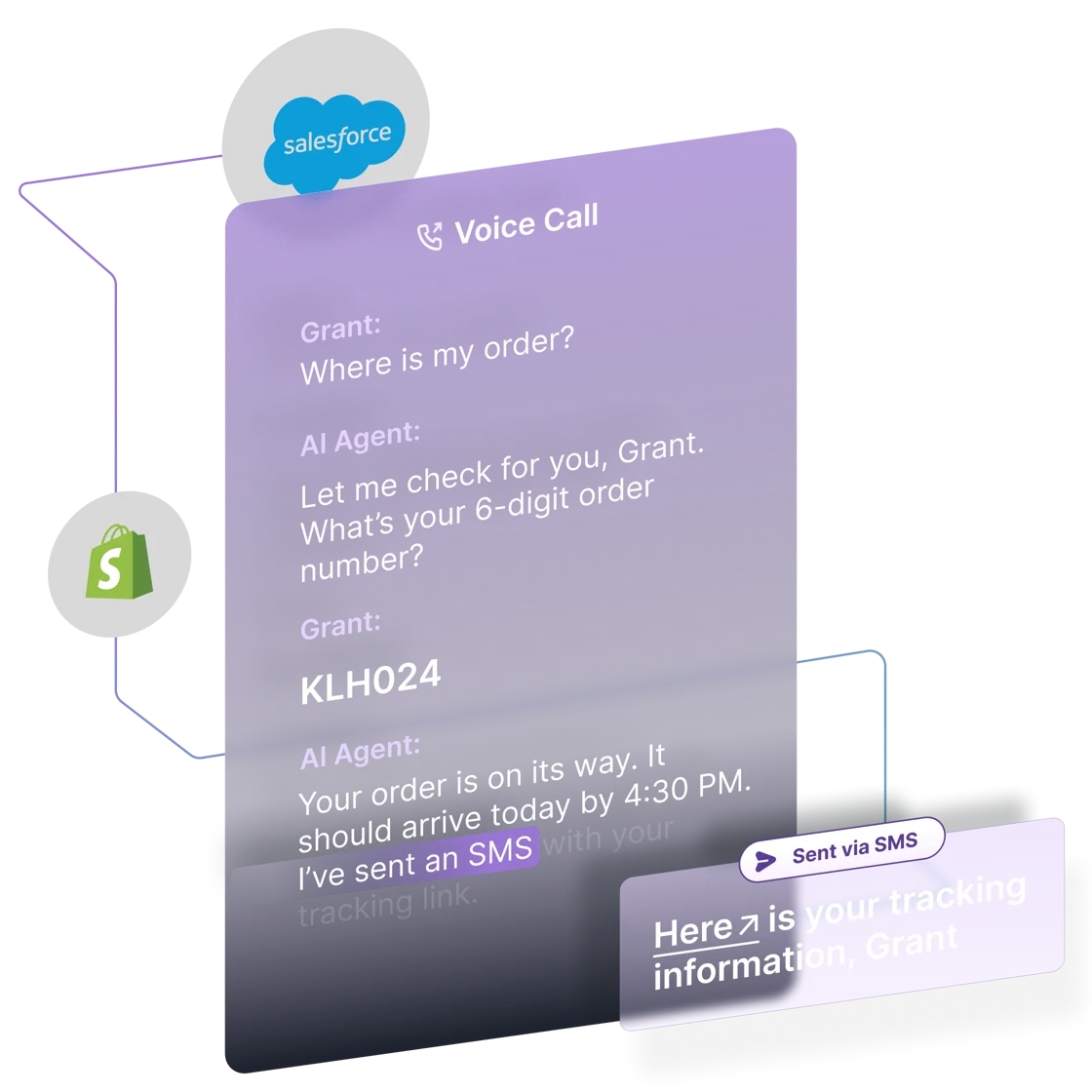
Chatbots have been around for quite some time, but OpenAI came in like a wrecking ball to propel AI-driven chat to new heights. It makes a lot of sense: people want quick answers, and a well-trained AI can provide it to them.
Similarly, customers are more likely to engage with customer support if they have multiple channels to choose from. Chatbots, WhatsApp, Facebook Messenger, phone calls, emails – you name it. There are as many preferences regarding customer care channels as channels there are out there.
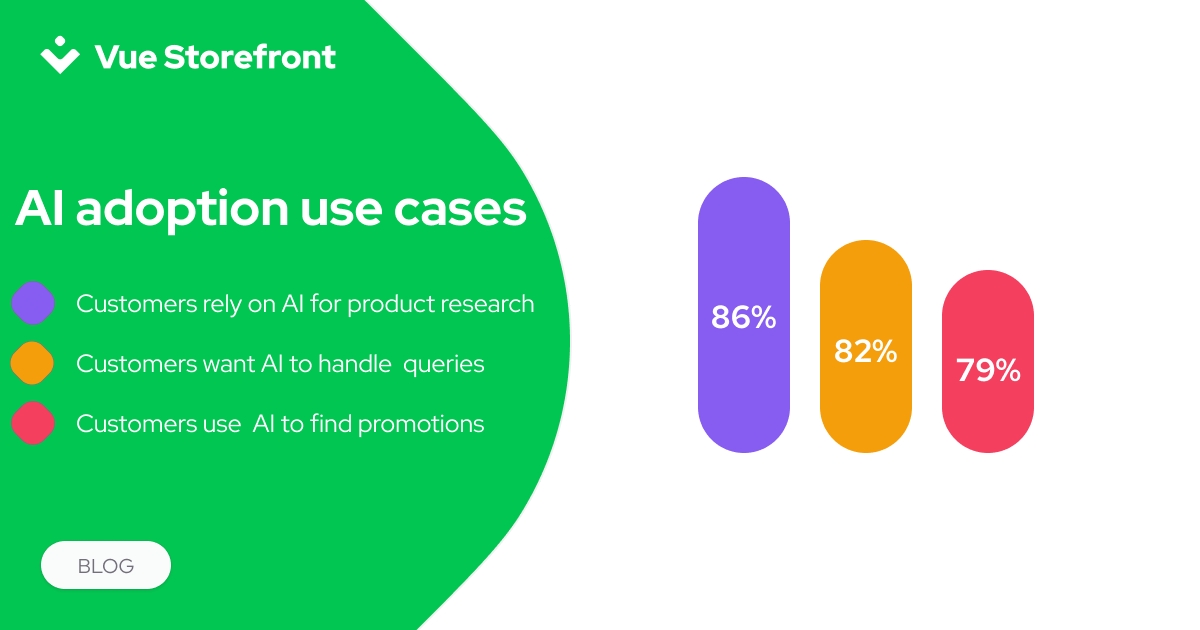
According to eMarketer , shoppers actually want AI to help them out. In a recent survey, 86% of them said they want AI help with product research, 82% of them said they would like customer service help from AI, and 79% said they’d like AI to help them find promotions.
It all revolves around making it easy for customers on all fronts – and AI chatbot tools can definitely help with that.
Trend #6 Localization
More than 50% of the internet is in English , but only 25% of the internet users are English speakers. It is no wonder that 91% of the companies operating on a global level used translation and localization services.
You want your customers to have a flawless experience in your online store. If language is an impediment in buying your products, you should consider localizing your website – if not in every language, at least in those languages your customers are more likely to speak.
Trend 7: VR and AR

Virtual and augmented reality technologies are making waves in the eCommerce industry. Brands like L’Oreal, Sephora, and many others have been leveraging it for years now, and with great results.
For instance, in 2020, Sephora increased their AR feature adoption by more than 28% . The pandemic (and lack of access to physical Sephora stores during lockdown) might have had a role to play in this, but one thing’s for certain: by 2024, AR and VR are here to stay.
So much so that they have become widely available for eCom brands that are not giants (like the aforementioned names, for example.)
Adopting reality enhancement tech like this makes all the sense in the world, and for a lot of eCommerce niches. Imagine being able to see how a piece of furniture looks in your living room before buying it, or trying on clothes virtually without ever leaving your house. These technologies have the potential to greatly enhance the online shopping experience and will likely become more prevalent in the years to come.
Trend #9: First-party data collection
Last but not least, there’s this elephant in the room. Digital marketers have been talking about this for what seems like ages, but it's finally happening: Google will start phasing out third-party cookies in 2024 . This means that eCommerce businesses will need to focus on collecting their customers' first-party data directly from their website or app to continue targeting them effectively with personalized ads and offers.
On the one hand, this may seem daunting for businesses that heavily rely on third-party data. On the other, it presents an opportunity to build stronger relationships with customers and offer them more relevant and personalized experiences through first-party data collection.
It’s not the end of the world. Cookies made advertising efficient – until they didn’t anymore, as more and more people woke up to the reality of how their private data is used (remember Cambridge Analytica ?) First-party data might be harder to collect, but it’s more ethical, and could help the internet heal.
Some ways to collect first-party data include:
Surveys (market research, existing customers. etc.)
Website data (in Google Analytics, for example)
Email data (especially the data derived from A/B tests, but not only)
Social media data (e.g., you can use social listening tools to learn what people say about you on social media)
App usage (e.g., you can learn what time of the day people are more likely to be primed for shopping)
Customer service interactions and feedback (a real gold mine for data useful across every business vertical)
Instead of a conclusion
You don't have to embrace all of these eCommerce trends in 2024. Some may simply not make sense for your business, and for others, it might just not be the time yet.
The key lies in knowing how to find a balance between the eCommerce industry trends possible and what makes sense for your business. Keep an eye on these trends, stay open to experimentation, and continuously adapt to the ever-changing eCommerce landscape.
After all, it isn't about following all the eCommerce market trends blindly but about providing shoppers with a better, more integrated, and more complete shopping experience. You may not be able to have them touch the fabric of a dress or test the weight of a frying pan through a screen, but you can do everything in your power to make them feel confident buying from you. And trust is exactly what drives sales, revenue, recurrence, and growth .
Share:
Share:
More in eCommerce
Ready to dive in? Schedule a demo
Get a live, personalised demo with one of our awesome product specialists.





















